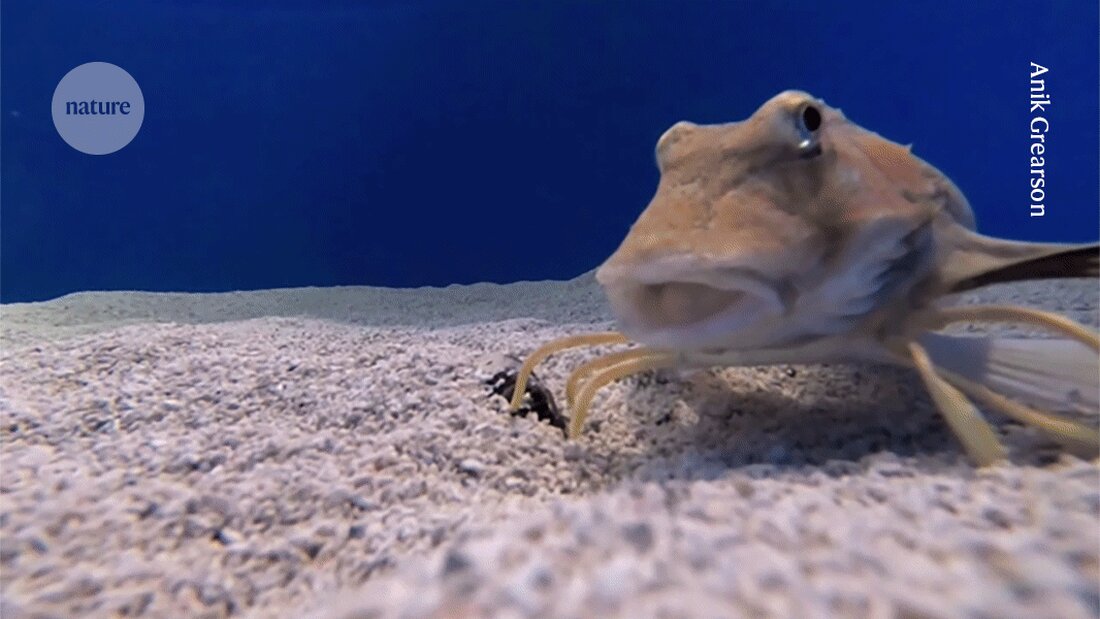This fish's legs are made for walking - and exploring the ocean floor
Scientists discovered that the northern sea rockfish not only walks with its legs, but also tastes the seabed.

This fish's legs are made for walking - and exploring the ocean floor
This fish has legs - but they're not just for walking. Scientists have discovered that the North Sea robin (Prionotus carolinus) uses its limbs to both walk along the seabed to scan the seafloor for buried food.
The research also revealed evidence of how P. carolinus repurposed its limbs as sensory organs over the course of its evolution. Genomic analyzes revealed the evolutionary history of legs within the broader sea robin family (Triglidae). The results are in two papers published today 1, 2 been described in Current Biology.
The special fish
Sea robins have protruding eyes like frogs, fins that resemble birds, and six legs that resemble crabs. They are “the strangest and coolest fish I have ever seen,” says the developmental biologist David Kingsley from Stanford University in California, who studies these animals.
Researchers have long known that the legs of P. carolinus have special sensory abilities 3, 4. Molecular biologist Nicholas Bellono from Harvard University in Cambridge, Massachusetts, notes that sea robins' supernatural hunting skills are so efficient that other fish follow them, hoping for leftovers. It is also known that the fish's six legs are covered with small bumps that look like taste buds. However, scientists had not previously examined the origins of the animal's abilities in detail.
Bellono's team wanted to change this and ultimately joined forces with Kingsley and his group. The researchers placed the fish in a tank with mussels and amino acid capsules, all buried under sediment. The fish were able to find these objects and dig them up with their shovel-shaped feet. A closer examination of these bumps, known as papillae, revealed taste receptor molecules, who were specialized to detect amino acids and chemicals produced by deep-sea organisms.
However, the most interesting results came after the researchers replenished their supply of sea robins. These fish couldn't find the buried food, and the researchers discovered that they had accidentally gotten to another legged species: P. evolans. The legs of this species were narrower and lacked papillae, indicating that leginess and the ability to taste had evolved independently.
The scientists compared the genomes of 13 sea robin species from around the world and created an evolutionary family tree. This showed that the legs for walking emerged first. Sensory organs later developed on the legs of some species.
The long legs gene
After examining the active genes in the animals' limbs, the researchers focused on a gene called tbx3a. Experiments showed that it plays a role in the formation of a leg where other fish have a fin. When researchers used the CRISPR–Cas9 genetic engineering tool to mutate tbx3a in some P. carolinus, the fish lost their papillae and the ability to dig for food.
Tbx3a encodes a type of protein known as a transcription factor. A single transcription factor often regulates the activity of a variety of genes, allowing it to have widespread effects. Bellono and Kingsley note that it is clear that tbx3a plays a role in leg development and taste perception. However, the scientists add that they do not yet know which mutation changed tbx3a activity in species with sensory legs or how it gave rise to the fish's new abilities. Once they understand that, Kingsley says, researchers could theoretically CRISPR genome editing use to create legs and sensory organs of another fish.
“These are really significant and interesting results,” says Thomas Finger, a cell and developmental biologist at the University of Colorado School of Medicine in Aurora. He was surprised to see that some species lacked the ability to sense chemicals, but he says the study effectively showed how this ability could evolve into a new trait by modifying an existing set of genes.
-
Allard, C.A.H. et al. Curr. Biol. https://doi.org/10.1016/j.cub.2024.08.014 (2024).
-
Herbert, A.L. et al. Curr. Biol. https://doi.org/10.1016/j.cub.2024.08.042 (2024).
-
Silver, W. L. & Finger, T. E. J. Comp. Physiol. 154, 167-174 (1984).
-
Bardach, J. E. & Case, J. Copeia 1965, 194-206 (1965).

 Suche
Suche
 Mein Konto
Mein Konto
